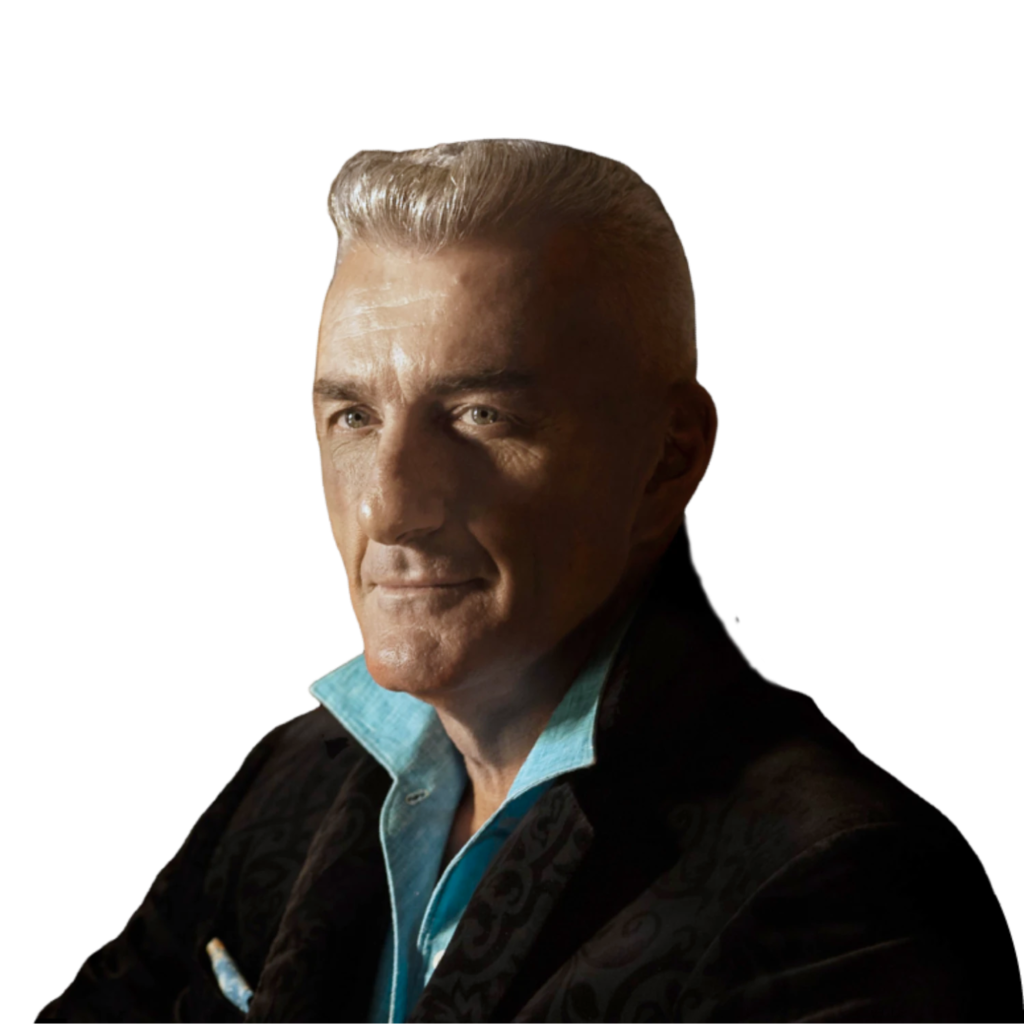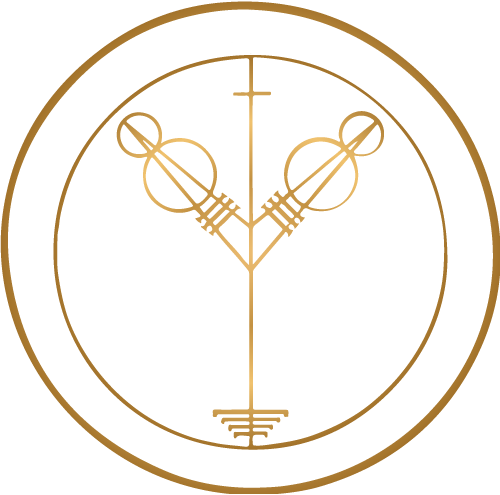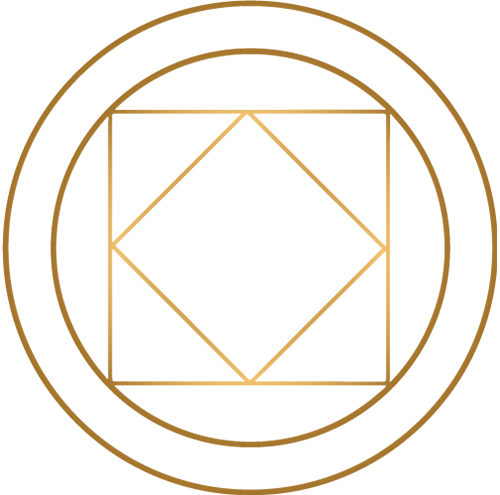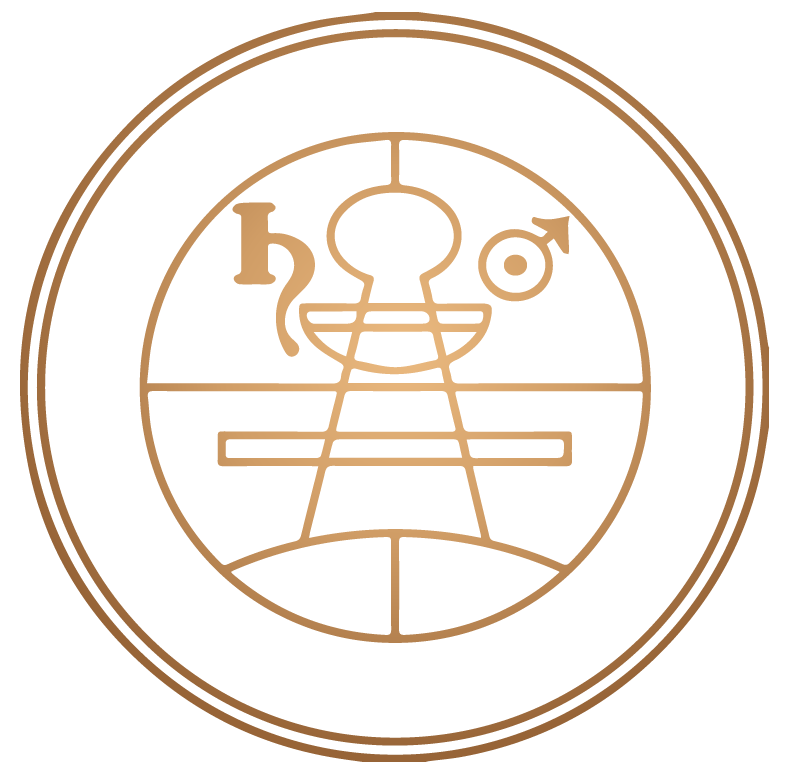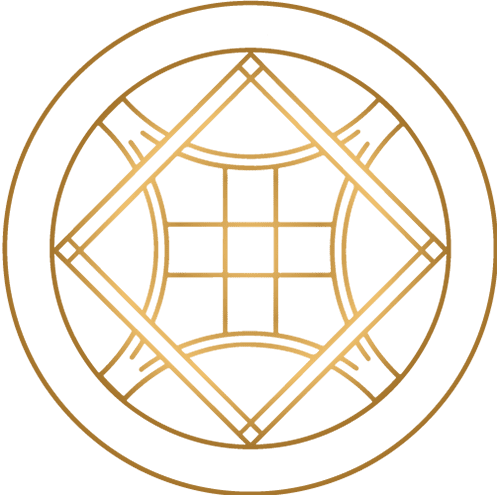Have Feelings of helplessness and difficulty been troubling you for some time? Have you turned to energy therapists or alternative therapists and the solution was only partial and temporary? It is not easy to find a professional spiritual healer with an extensive training. However, this does not mean that such healers do not exist. To ensure your wellness,contact a professional with deep knowledge and familiarity with the esoteric Jewish wisdom. Samuel Zohar Yanai, a spiritual kabbalistic expert, invites you on a journey that will allow you to free yourself from all blockages.
The process is conducted discreetly, in complete isolation and does not require the person’s physical presence. The Spiritual healing can be done in Zoom or WhatsApp video calls from anywhere in the world. The process is precisely adapted to your needs and is suitable for people of all faiths and religions regardless of gender, race, and nationality.
How can we recognize a true spiritual healer?
The definition of healing has become more loose than ever. Many flock to these professionals today to find a solution that they cannot get in conventional medicine.
However, we often find that such “professionals” are unreliable at best. Most of us do not know at all how to distinguish between a spiritual healer who is well versed in the spiritual world and the energetic codes, people who have undergone a short and superficial training course and between straight-out charlatans.
Here are some points you should consider.
Spiritual healing involves in-depth knowledge in energy healing
A reliable spiritual healer will have extensive knowledge in the field of negative energies and how they perform in the physical and energetic body, in the person’s environment, his family and his business. Also, such healer must know how to carry out energy
transformation and transfer positive energies to others in a beneficial and long-term
manner.
1. Familiarity with the human physical structure
In addition, a spiritual healer must have an in-depth knowledge of the human body. For
example, when there are toxins in the liver, energy therapy will not be enough if detoxification is not also performed.
2. Kabbalistic knowledge
In order to call oneself a spiritual healer, one must be familiar with the world of esoteric
teachings and demonstrate proficiency in energetic codes and ciphers that are taught in appropriate settings.
3. Physical and mental resilience
A person who claims to provide strength and comfort to others must also have very high mental and spiritual balance, well balanced mentally and in good health. If the vessel is not complete, the energy that will flow through it will not be complete either.
A spiritual healer who gives you a complete and multidisciplinary answer
Samuel Zohar Yanai accompanies you in a discreet process personally adapted to your unique circumstances and needs. The process is suitable for all types of beliefs and religions and is carried out during the night. The process requires seclusion in order to connect with the spiritual world and therefore, is carried out without the presence of a person and does not require physical arrival.
Close support until a complete solution
Beware of any spiritual healer who tells you that the problem can be solved in one session. To ensure that the correction is maintained, I repeat the healing process every 30 days and stay in touch with you until all blockages are completely removed.
Removal of all energetic vulnerabilities
Along with spiritual healing, I also remove curses, evil eye and ill wishes and specialize in
removing black magic. After removing all the negative energies and blockages, I will perform energetic defenses that will prevent repeated attacks.
Strengthening the support factors in all areas of your life
To maintain your beneficial powers, I provide advice on the use of vitamins and herbs, proper nutrition and exercise that will maintain your resilience. More often than not, energy damage also affects personal and business relationships. Therefore, I also provide you with
business advice and coaching.
Rekindling the positive flow
After the spiritual healing process is over, I will re-open the blocked positive energy
channels.
Correct timing is key
Samuel Zohar Yanai invites you to enjoy a quick and efficient response to the energy blockages that have plagued you. Persistence in the process and addressing it as soon as possible will make it possible to stop the negative trend and prevent aggravation. I am here, available for you and committed to you.
For more details, an answer to any question and to schedule a consultation, you can contact us now on the website, on WhatsApp or by phone.
What is a blessing and what does it have to do spiritual healing?
Throughout recorded history, leaders, clergymen and spiritual leaders and heads of families
have given blessings to humans. These dignitaries gave people hope and strength through the blessing that was used to overcome physical difficulties and illnesses, for success in business, finding a relationship, starting a family and many other purposes.
The blessing is usually performed by placing the hand on the blessed person’s head and reciting verses from the Torah or Kabbalah books. The purpose of the blessing is to bring about an energy transformation and convert negative energy into positive in a person. There are many studies showing how a person’s energetic aura changes after blessings.
It is a pure energetic act and, in this sense, every person who blesses another person constitute, in a way, a spiritual healer.The spiritual healer – his status and roles throughout history there has hardly been a time in which humans lived when there was not a member of thecommunity who served as a spiritual healer in its broadest definition. Evidence of healing exists on all inhabited continents and takes diverse forms. However, they all have one common denominator – the purpose was to promote full integration in the person and to
promote a balance of body-mind-emotion-spirit-nature.
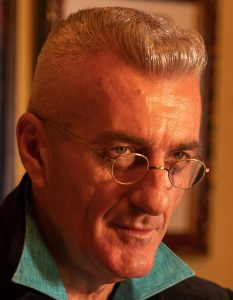
The spiritual healer and his and roles throughout history
There has hardly been a time in which humans lived when there was not a member of the community who served as a spiritual healer in its broadest definition. Evidence of healing exists on all inhabited continents and takes diverse forms. However, they all have one common denominator – the purpose was to promote full integration in the person and to promote a balance of body-mind-emotion-spirit-nature.
In the ancient era, there was no division between body, soul, and spirit among most peoples. The energy flowed through all the components of this trinity and affected everyone. With the development of medicine based on science, since the days of ancient Greece, this trinity was divided into separate terms and scientific medicine concentrated all its attention on the physical body. This move significantly damaged the value and status of a spiritual healer in society.
The history of spiritual healing
Spiritual healing is a field whose origins extend throughout the vast majority of human history and is common in most different cultures and religions around the world.
In every culture, different methods and techniques have been developed for this practice. The earliest evidence was found in prehistoric caves. When a warrior was injured in a battle against an animal or against a rival tribe, there were often no medical means available to treat his wounds. In such a case, the clan sorcerer would make use of spiritual means. By activating the warrior’s wounded body, conversations, ecstatic singing, and touch therapy, he would promote healing, even without herbs or dressings.
This phenomenon was common among indigenous tribes in North America who used such methods to deal with personal and family crises. The methods also included combining spiritual healing with figures of animals such as eagles, wolves, and bears.
In the Bible, the first spiritual healer is the prophet Elisha, Elijah’s disciple, who cared for the dying son of a lonely woman, and through a combination of spiritual healing and physical therapy saved his life.
Spiritual healing techniques in different cultures
Each culture throughout history adopted different yet simillar methods for dealing with black magic, spiritual healing and other means of theraphy.
India
The spiritual tradition of India dates back to 5000 years. According to this tradition, a universal energy named Prana is interwoven throughout the universe and drives all things. According to all religions and spiritual approaches originating in India, from Hinduism and Jainism to Buddhism, the prana is an extremely important tool for healers. With its help, diseases, physical and mental weakness, and insanity can be treated.
In Hindu culture, the practice of Ayurveda stands as a significant testament to the deep-rooted belief in holistic healing. This ancient system, deeply intertwined with spiritual principles, utilizes a blend of energy work and plant-based remedies to promote health and treat diseases. Ayurveda, meaning “the science of life” in Sanskrit, is not just a medical practice but a way of living that emphasizes the balance of body, mind, and spirit..
This tradition of healing is deeply connected to Hinduism’s philosophical and spiritual teachings. It incorporates the understanding of the five elements (earth, water, fire, air, and ether) and the three doshas (Vata, Pitta, and Kapha) which are fundamental energy types believed to be present in every individual. Ayurvedic treatments involve dietary changes, herbal remedies, yoga, meditation, and other practices aimed at restoring balance to these energies within the body.
Tales from Hindu and Buddhist traditions speak of healers and yogis who wandered through villages and cities, offering their healing services. These healers, often revered for their deep spiritual insight and mastery over their bodies and minds, employed a unique combination of physical touch and insightful conversations to effect healing. This approach was not merely about treating physical ailments but also about addressing the emotional and spiritual imbalances that were believed to contribute to the illness.
The healers’ methods were deeply personalized, taking into account the individual’s unique constitution and life circumstances. This holistic approach is a hallmark of Ayurveda, reflecting an understanding that true healing involves the whole person and not just the symptoms of disease.
In addition to Ayurveda, the practice of Yoga, another integral part of Hindu culture, contributes to this holistic view of health. Originating as a spiritual practice, yoga encompasses physical postures, breath control, and meditation, promoting physical strength, flexibility, and mental clarity. It’s often used in conjunction with Ayurvedic principles to maintain health and prevent disease.
China
Since at least 3000 BC, there has already been a belief in China in the vital energy known as Chi. Like Prana, Chi is also perceived as the energy that is present in everything and drives everything. Chi consists of two elements that are polar opposites to each other. Yin (the dark side) and yang (the bright side).
As long as these two forces are balanced, health prevails in the body and mind. However, when this balance is hindered, illness occurs. Yin and yang, therefore, were used as essential tools by every Chinese spiritual healer, usually in the role of a priest, monk , a medicine man or a spiritual or martial arts teacher. The Chinese healer worked to promote balance through these methods among all human beings – from farmers to warriors.
In Chinese medicine, including folk medicine, it was very common to use many spiritual techniques involving Chi (yin and yang – male and female) in order to improve health and treat a variety of diseases.
Central to this tradition is the concept of Chi (Qi), the vital life force that flows through all living beings. This concept is intricately linked to the principles of Yin and Yang, representing the dualistic nature of existence – Yin being the passive, feminine aspect, and Yang the active, masculine counterpart. The balance of these forces is considered crucial in maintaining health and treating diseases.
Traditional Chinese Medicine (TCM) encompasses a broad range of practices, including acupuncture, herbal medicine, tai chi, qigong, and dietary therapy. These practices are founded on the belief that the human body is a microcosm of the larger surrounding universe, interconnected with nature and subject to its forces. Health, in TCM, is perceived as a harmonious interaction between these forces within the body and the external environment.
Acupuncture, one of the most well-known practices of TCM, involves the insertion of fine needles into specific points on the body to regulate the flow of Chi. This technique is used to treat a variety of conditions, from chronic pain to digestive disorders. Similarly, herbal medicine in TCM involves the use of natural substances – plants, minerals, and occasionally animal products – to restore balance to the body’s Yin and Yang.
Qigong and Tai Chi are practices that combine movement, meditation, and controlled breathing to enhance the flow of Chi in the body, promoting physical and mental well-being. These exercises are not only considered beneficial for health but are also practiced as a form of spiritual cultivation, aligning the practitioner with the rhythms of the universe.
In addition to these practices, dietary therapy in TCM is based on the principle that food, like medicine, affects the balance of Yin and Yang in the body. Foods are classified according to their energetic qualities and are used to treat imbalances and prevent illness.
In Islam
In Islamic tradition, particularly within Sufism, the mystical branch of Islam, there has been a rich history of healing practices. Sufis, known for their deep spirituality and devotion, often follow the teachings of revered mystics like Jalal al-Din al-Rumi. These practices not only addressed physical ailments but also placed a strong emphasis on mental and emotional well-being, treating conditions like depression and anxiety.
The Sufi approach to healing is holistic, considering the interconnectedness of body, mind, and spirit. Central to this is the practice of dhikr, the remembrance of God, often conducted through meditative techniques and chants. This spiritual practice is believed to cleanse the heart and soul, fostering a deep sense of peace and connection with the divine. The meditative aspect of dhikr helps in calming the mind and reducing stress, which can have a direct positive impact on mental health.
Another significant element in Sufi healing practices is the Sema, or ecstatic dance, most famously exemplified by the whirling dervishes. This ritual, characterized by spinning and rhythmic movement, is not just a form of artistic expression but a profound spiritual practice. It symbolizes the revolving of the human soul around the divine truth and is thought to lead to a state of spiritual ecstasy where healing can occur.
Fasting, another key aspect of Sufi practice, is not only a religious obligation during Ramadan but is also used as a method of purification and self-discipline. By abstaining from physical nourishment, practitioners believe they can achieve greater spiritual clarity and health.
Study and contemplation of sacred texts, including the Quran and the poetry of Rumi, are also integral to the Sufi healing process. These texts provide deep insights into the nature of existence, pain, suffering, and the pathway to spiritual and emotional healing.
Sufism, with its rich traditions of meditation, music, dance, fasting, and study, offers a unique perspective on healing, one that transcends the physical and delves deep into the psychological and spiritual realms. This approach is not only about curing diseases but about achieving a state of holistic well-being, aligning oneself with the rhythm of the cosmos and the will of the Divine.
Francis of Assisi
the founder of the Franciscan monastery, (Catholics), performed spiritual treatments for his students, through proximity to the Christian scriptures and through trips, tours and contact with the natural life in the region where he lived in Italy. It is this healing tradition that established the Franciscan order which became one of the central orders of Catholic Christianity for hundreds of years.
Francis of Assisi, a revered figure in Catholic Christianity, was not only the founder of the Franciscan Order but also a pioneer in integrating spiritual practices with healing. His approach to healing and well-being was deeply rooted in his profound connection with Christian scriptures, nature, and a life of simplicity and humility. This holistic approach to spirituality significantly influenced the Franciscan order and left a lasting impact on Catholic Christianity.
Francis believed that closeness to God could be achieved through a deep understanding and living out of the teachings found in Christian scriptures. He emphasized the importance of the Gospels, encouraging his followers to lead lives that mirrored the life and teachings of Jesus Christ. This involved not just intellectual study, but a transformative process where the scriptures informed every aspect of one’s life, fostering a deep spiritual and emotional well-being.
Additionally, Francis of Assisi is well-known for his profound connection with nature. He often took his students on trips and tours around the beautiful landscapes of Italy, where he lived. These excursions were more than mere journeys; they were spiritual retreats that allowed individuals to connect with God through the natural world. Francis saw the reflection of the divine in all elements of nature, and he believed that this connection could lead to healing and rejuvenation of the soul. His famous “Canticle of the Sun” beautifully expresses this deep sense of kinship with all creation.
The Franciscan tradition also emphasizes the importance of poverty, humility, and service to the less fortunate. By living a life devoid of material excess and dedicated to serving others, Francis and his followers found a deeper sense of peace and purpose. This lifestyle itself was a form of healing, as it removed the distractions and attachments that often lead to spiritual unrest.
Spiritual healing in the jewish golden age in Muslim Spain
During the Jewish Golden Age in Muslim Spain, many spiritual teachers including the Maimonides and Rabbi Moshe Ben Nachman used a combination of herbal medicines, strict nutrition plans and spiritual healing that included encouraging positive thinking, promoting balanced sleep and nutrition and exercise programs.
A student of the holy Ari, Rabbi Haim Vital also used excursions designed to connect man to nature and use the language of dreams. His healing process included conversations and prayers throughout the hours of the day in order to provide resilience and physical and mental strength to the patients who contacted him.
During the Enlightenment period starting in the middle of the 18th century, the power of spiritual healing greatly diminished. However, there is evidence of such practices in Germany, in the 19th century in writings of philosophers such as Goethe, Schlegel, Fichte and the poet Novalis. Although they did not engage in spiritual healing, they greatly encouraged it, through their romantic writings and poetry.
The Native American tribes
In the traditions of native North American tribes, a prominent use of healing was evident. The tribal healer was actually a spiritual healer who channeled the energies of the universe such as the light of the sun, the moon and the stars, fire, and water and used those for healing.
in Central and South America. Among the kingdoms of the Maya, the Aztecs, and the Incas, a spiritual healer was mainly at the service of kings, priests and warriors and helped them heal diseases and injuries and win battles.
In North American tribal societies, the role of the healer was deeply entrenched in spiritual beliefs. These healers, often referred to as medicine men or women, were not just physical healers but also spiritual guides and community leaders. They believed in harnessing the energies of the universe, such as the light of the sun, the moon, and the stars, as well as the elements of fire and water, for healing purposes. Their practices often involved rituals, chants, and the use of sacred objects, which were thought to draw on these natural energies. Herbal medicine was also a significant aspect of their healing practices, with an extensive knowledge of the medicinal properties of plants native to their region.
Healing rituals could include sweat lodges, where the combination of heat, steam, and prayer offered both physical detoxification and spiritual purification. The use of totems or spirit animals was also common, symbolizing a connection to the spiritual world and the guidance of ancestral spirits.
In the great civilizations of Central and South America, such as the Maya, Aztec, and Inca empires, healers also played a vital role, often serving the elite classes like kings, priests, and warriors. These healers were skilled in a variety of techniques, from herbal remedies to surgical procedures. They were crucial not only in treating diseases and injuries but also in preparing leaders and warriors for battles, both physically and spiritually.
In these cultures, healing was often intertwined with religious and ceremonial practices. Rituals might involve offerings to gods, the use of psychoactive plants to induce visions or trances, and complex ceremonies that sought the favor of the spiritual world for healing and victory in battles.
Both in North and South American indigenous cultures, the approach to healing was holistic. It was not just about treating the body but also about aligning the spirit with the natural and supernatural world. This deep connection with nature and the spiritual realm reflects a worldview where health and well-being are seen as a balance between physical, emotional, spiritual, and environmental factors.
The legacy of these ancient healing practices continues to influence modern holistic medicine and offers a unique perspective on health and healing that emphasizes harmony with the natural world and the interconnectedness of all aspects of life.
Spiritual healing in Christianity
Healing in Christianity has evolved significantly over the centuries, intertwining with various beliefs and practices. Initially, it was indeed the Catholic monks who often took the lead in offering care to the poor and sick. Their approach sometimes incorporated what was considered mystical energies, a practice not universally accepted by the church hierarchy. This tension highlighted a broader debate within Christianity about the nature of spiritual healing and its place within the ecclesiastical structure.
The skepticism of the church towards these healing practices stemmed partly from a concern about undermining the authority and status of priests. The church traditionally held a strict view on spiritual matters, including healing, which was seen as a divine intervention rather than a human endeavor. However, despite the church’s apprehension, these healing practices continued, reflecting a deep-seated human desire for physical and spiritual relief.
In the 19th century, the phenomenon of Christian healing began to expand significantly in the United States, partly due to the rise of new religious movements and revivals. This period saw a growing acceptance of the idea that faith and prayer could directly influence physical health. The concept of “faith healing,” where prayer and belief in God’s power are seen as key to overcoming illness, gained popularity.
This expansion also coincided with a greater openness to ideas from different spiritual traditions, including those outside of mainstream Christianity. Figures like Samuel Zohar Yanai, with their unique blend of Christian beliefs and Kabbalistic practices, emerged in this environment. Yanai’s use of ciphers from the Zohar and Kabbalah to counteract energetic attacks and restore positive energy flow is an example of this syncretism. Such practices, while still not universally accepted within Christianity, represent a growing trend towards integrating diverse spiritual techniques in the pursuit of healing.
Jesus Christ
In the teachings and accounts of Jesus Christ within Christian tradition, it’s often emphasized that his approach to healing was holistic, addressing both the spiritual and physical needs of individuals. When Jesus cared for the lepers, the sick, and others in need of healing, he first attended to their spiritual well-being before addressing their physical ailments.
This approach is exemplified in numerous accounts in the New Testament. For example, before healing a paralyzed man, Jesus first forgave his sins, demonstrating his concern for the man’s spiritual state (Mark 2:5). This action underlines the belief that physical health and spiritual health are deeply interconnected.
Today, the landscape of Christian healing is diverse, ranging from traditional prayer and sacraments to more unconventional methods influenced by other spiritual traditions. This diversity reflects both the broad spectrum of belief within Christianity and a wider cultural openness to different forms of spiritual practice. As individuals like Yanai demonstrate, the search for healing can often lead to a blending of traditions, creating new pathways for those seeking relief and restoration.
In Jesus’ ministry, healing the sick wasn’t just about curing physical symptoms; it was also a way to restore individuals to full participation in their community and spiritual life. In the case of lepers, who were marginalized and ostracized due to their condition, Jesus’ healing extended beyond physical cure to social and spiritual restoration. By healing them, he not only relieved their physical suffering but also broke down social barriers, reinstating them into society.
Furthermore, Jesus’ acts of healing were often accompanied by teachings that provided spiritual insights and guidance. His miracles were not only demonstrations of compassion but also served to illustrate deeper spiritual truths and the coming of God’s kingdom.
The 20th century spiritual awakening
In the early sixties of the twentieth century, a significant awakening of spiritual healing began, first through Indian gurus such as the Maharishi Yogi, Osho and others, who focused on personal healing expressed in the person’s relationship with himself, his truth and his choices in life.
Spiritual healing took on different dimensions when teachers like Ram Dass (American) came into the picture who preached for kindness and spiritual healing to people and their environment. Renowned heart surgeon Barney Siegel is also known to have advocated humor and joy as a method of spiritual healing and applied it to his patients.
Today, there are many healing methods and techniques. However, their effectiveness. Those who wish to undergo Kabbalistic spiritual healing according to the ancient wisdom, are required to find an expert with deep knowledge who can provide a true solution.
Samuel Zohar Yanai accompanies you in every step and uses ciphers from the Zohar and Kabbalah to remove blockages and energetic attacks and to grant a spiritual and energetic empowerment.
For many years, Samuel has accompanied many people in Israel and around the world and helped them restore positive energy flow and open blockages in all areas of life. The site awaits you with diverse and fascinating knowledge about the spirit worlds that will enrich your world. To learn more and arrange a consultation, all you have to do is leave details here or contact us on WhatsApp or by phone.
Contact
Samuel Zohar Yanai uses ciphers from the Zohar and Kabbalah to block energetic attacks and restore the positive energy flow. It’s time to contact a professional and reliable healer.
You can read a lot more about the field on the website and for more information or to schedule a consultation, contact here on the website, on WhatsApp or by phone.

